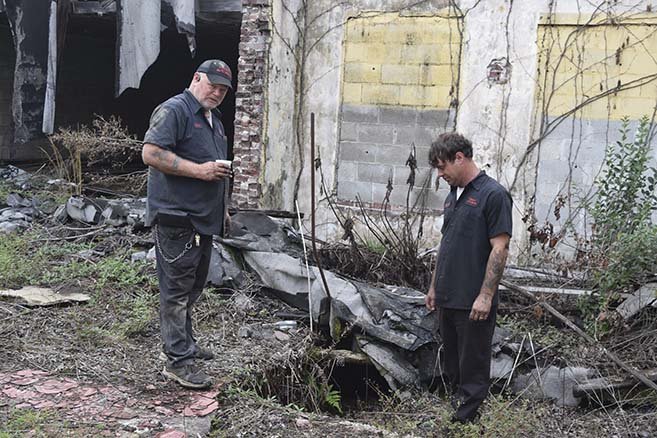
By DON FLETCHER
News Staff Writer
City of Atmore officials have committed to buying three properties, one on Trammell Street and two at the northern end of Carney Street, where foundations have been compromised by drainage from a ditch that was apparently initially built to irrigate farmland.
City council members approved without discussion during their October 28 meeting a resolution authorizing the payment of $65,000 to local Certified Public Accountant Randy Nichols because of the damage caused by a breach in the drainage ditch that runs under a Trammell Street building he owns.
Mayor Jim Staff said at the end of the October meeting that he “didn’t know how much Nichols would be paid for the property,” that there were “several outstanding amounts” to be deducted from the purchase price before payment would be made.
But City Clerk Becca Smith said the CPA would receive the full amount called for in the resolution approved by the council.
“No check has been cut yet, but we will pay him the $65,000 that was noted in the resolution,” Smith said. “He will get the full amount, with no deductions.”
The breach has been left unchecked for years and has damaged the foundations of the Nichols building, as well as Carney Street properties owned by Richard “Bubba” Tedder, who operates an automotive repair shop, and his son, Richey Jr., who recently bought the building next to his father’s business.
“This is all part of the Trammell Street Drainage Project,” Smith said. “(The drainage problem) has hurt the Tedders’ buildings, too, and we’re going to make it right with them.”
Bubba Tedder said this week he noticed a hairline crack in the wall of his building a couple of months after he bought the property last year. He said he called the city but never got a response, and the situation began to worsen. It got even worse after someone finally looked at it, he added.
“Nobody ever called me back, so I called the mayor,” the local mechanic said. “He came down here with (Codes Enforcement Officer Greg Vaughn), and they looked at it. Then the city came back and cut all the trees and bushes down around the washout area, and that made things even worse. We started noticing new cracks in the walls after they cut all that down.”
He said the problem has not yet reached his main shop area, but indications are that it will soon do so, if something isn’t done.
“I don’t want this property compromised, or me and the city are really going to have a problem,” he said. “The floor (on the part of the building affected by water from the ditch) has already sunk 8-10 inches, so somebody needs to take care of it.”
Vaughn and an engineer from Civil Southeast returned to examine the problem and confirm that it was worse than thought.
“We looked at it, and indications are the ditch — which appears to be concrete or concrete block — runs diagonally under the Nichols and Tedder properties,” Vaughn said. “The properties share a common wall, and the ditch runs beneath them all.”
Vaughn declined comment on reports that the drainage ditch was not originally a city watercourse but an irrigation and drainage ditch that was built for what was then farmland, and that the former owner might have forgotten it or covered it up when the land was sold.
“I’ve heard that, but I don’t know if it’s true or not,” he said. “Either way, it’s the city’s problem now.”
Tedder pointed out a fact that he said seems simple to him and should have seemed simple to city officials.
“If the Nichols part had been fixed when he first reported it, there wouldn’t be a problem for us,” he said. “Mr. Nichols and the city knew there was a problem. If they had taken care of it when they first noticed it, my son and I wouldn’t have the problems we’re having now.”
City officials will begin negotiations with the Tedders within the near future, and council members are expected to give final approval at their November 25 meeting to the purchase of and payment for the Nichols property.
